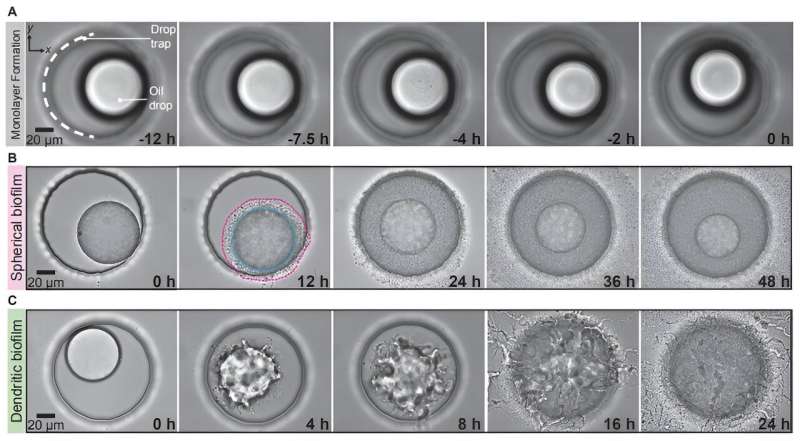Phys.org August 18, 2023
Certain marine bacteria can degrade small-molecule hydrocarbons, but there is still limited understanding on how this process works in biofilms. An international team of researchers (Japan, France, UK) showed that Alcanivorax borkumensis initially formed a spherical biofilm around a droplet of hexadecane, which grew and buckled. This transition was caused by an initial limited interaction with the oil by only some of the cells, followed by rapid cell growth and division that distorts the shape of the biofilm, leading to an increase in the surface area and acceleration in the rate of consumption. They identified a shift in biofilm morphology that depended on adaptation to oil consumption: Longer exposure led to the appearance of dendritic biofilms optimized for oil consumption effected through tubulation of the interface. They correlated tubulation to localized defects in the interfacial cell ordering. They demonstrated control over the droplet deformation by using confinement to position defects, inducing dimpling in the droplets. They developed a model that elucidated biofilm morphology, linking tubulation to decreased interfacial tension and increased cell hydrophobicity… read more. TECHNICAL ARTICLE 1 , 2

Bright-field sequences showing biofilm phenotypes… Credit: Science (2023)